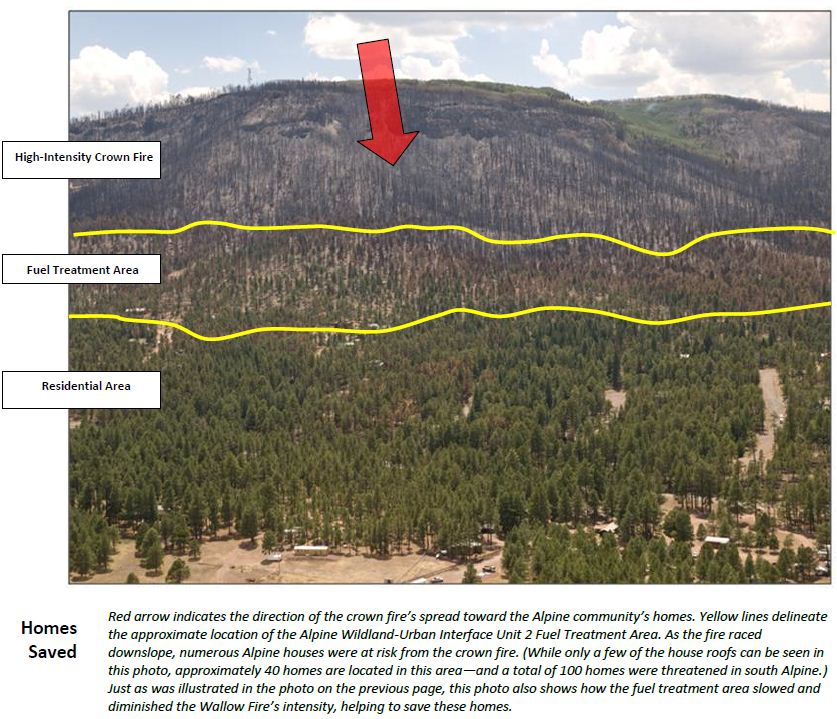A report has recently been released that highlights several examples during the Wallow fire when fuel treatments, modifying the vegetation near populated areas, were effective in reducing the intensity of the fire, making it possible for firefighters to remain in the area and prevent structures from burning. The fire burned in eastern Arizona in May and June, 2011. It burned 522,900 acres and 32 homes, becoming the largest fire in the history of the state.
Here is an excerpt from the report:
Fuel Treatment Units Slow the Wallow Fire– Allow Firefighters to Safely Attack
As the main fire enters the ½ mile-wide White Mountain Stewardship Fuel Treatment units located above Alpine, the blaze drops from up in the tree crowns down to the surface level. The fire’s rate-of-spread dramatically slows. Thanks to the influence of these previously developed treatment units—implemented beginning in 2004—flame lengths are now low enough to allow firefighters to safely attack the fire and protect homes and property.
Engines and crews successfully extinguish the spot fires. To further protect residents’ houses, these firefighters also conduct low-intensity “firing operations” from roadways and other fuel breaks. These aggressive firefighting suppression actions continue throughout the evening—successfully halting the spread of the Wallow Fire into the community of Alpine. In fact, all of this community’s structures—but one—are saved from the fire’s attack. (Actually, this single structure burned several days later when an ember—most likely transported downwind during the June 2 crown fire run—smoldered for several days before flaring up.)

The report was written by Pam Bostwick, Jim Menakis, and Tim Sexton, all of the U. S. Forest Service.

Very frequently, we are exposed to outcomes of natural disasters, given data, and conclusions. On some occassions reports, like this one, substantially reinforce views. It seems to be a solid example of the value of hazardous fuel reduction that even a civilian,
like me, can understand. Excellent article. A+